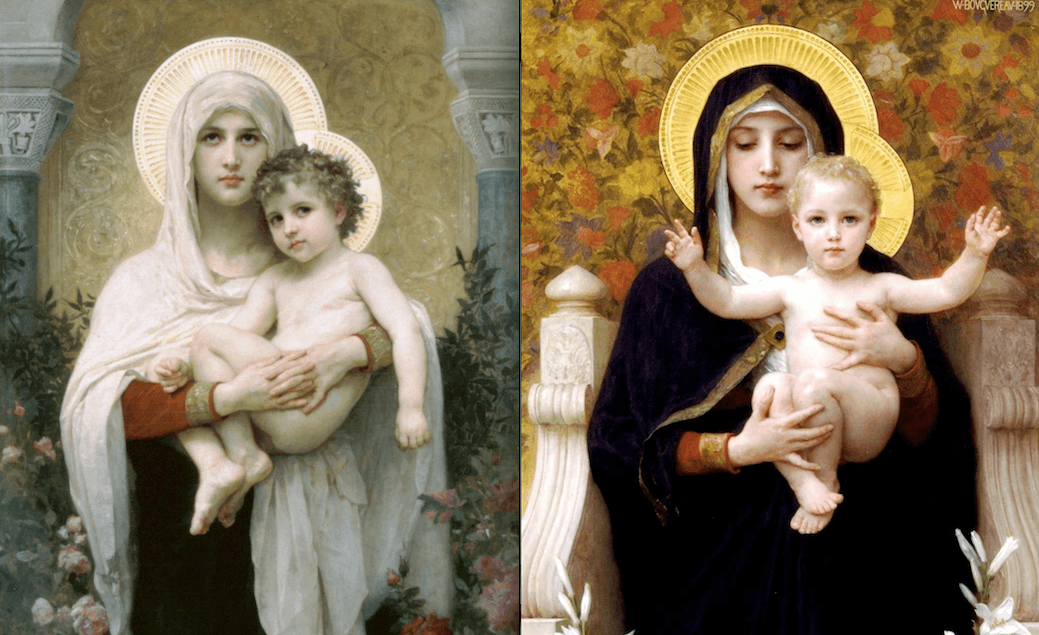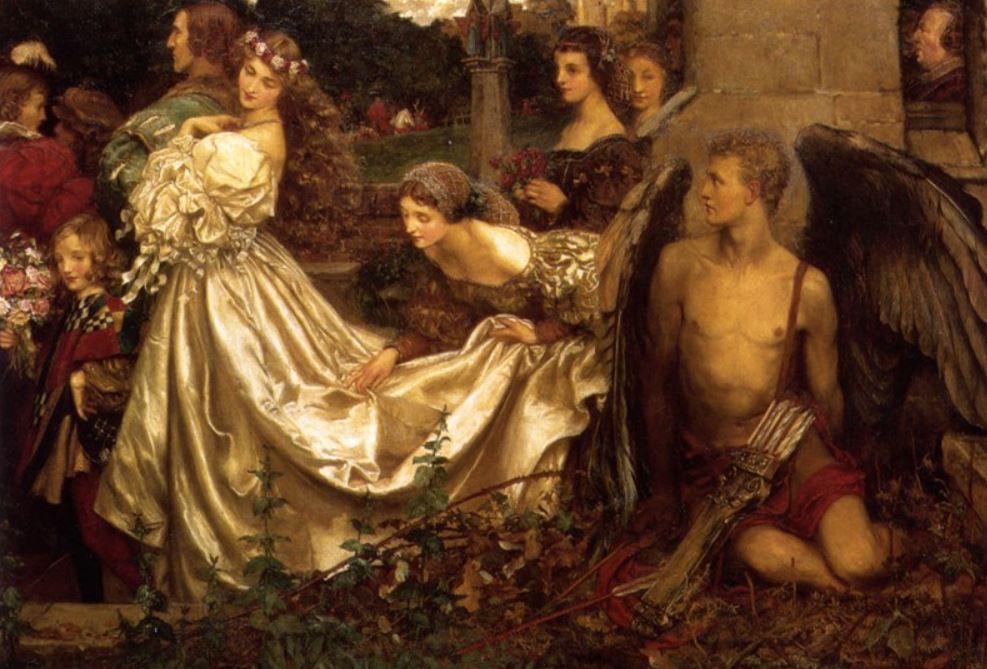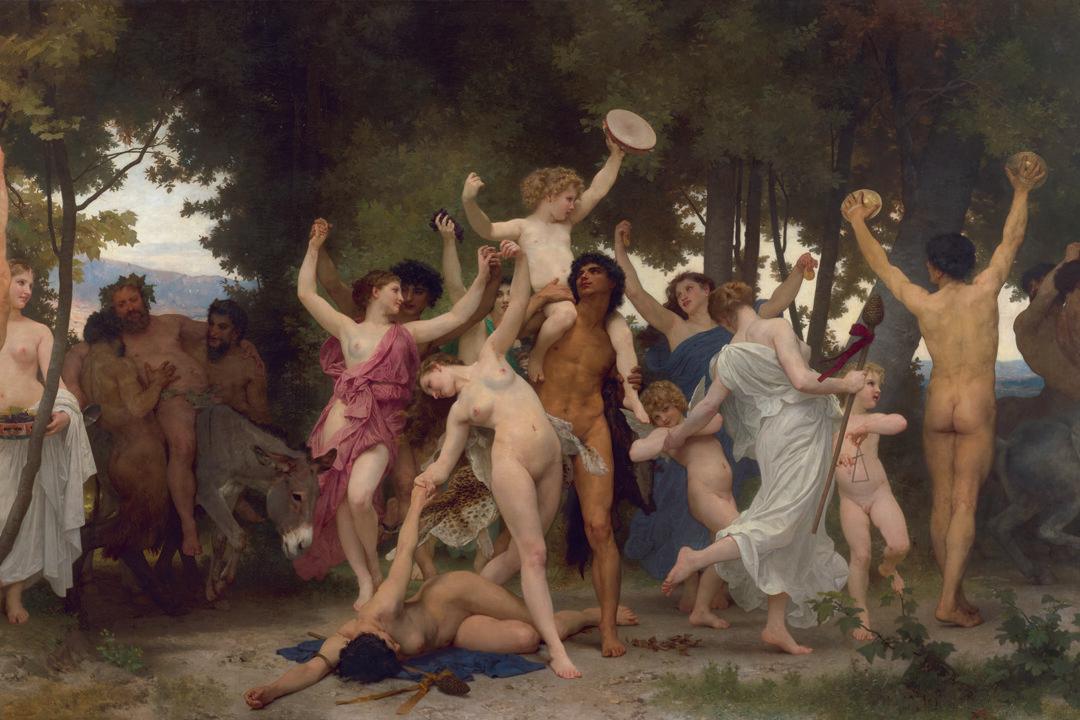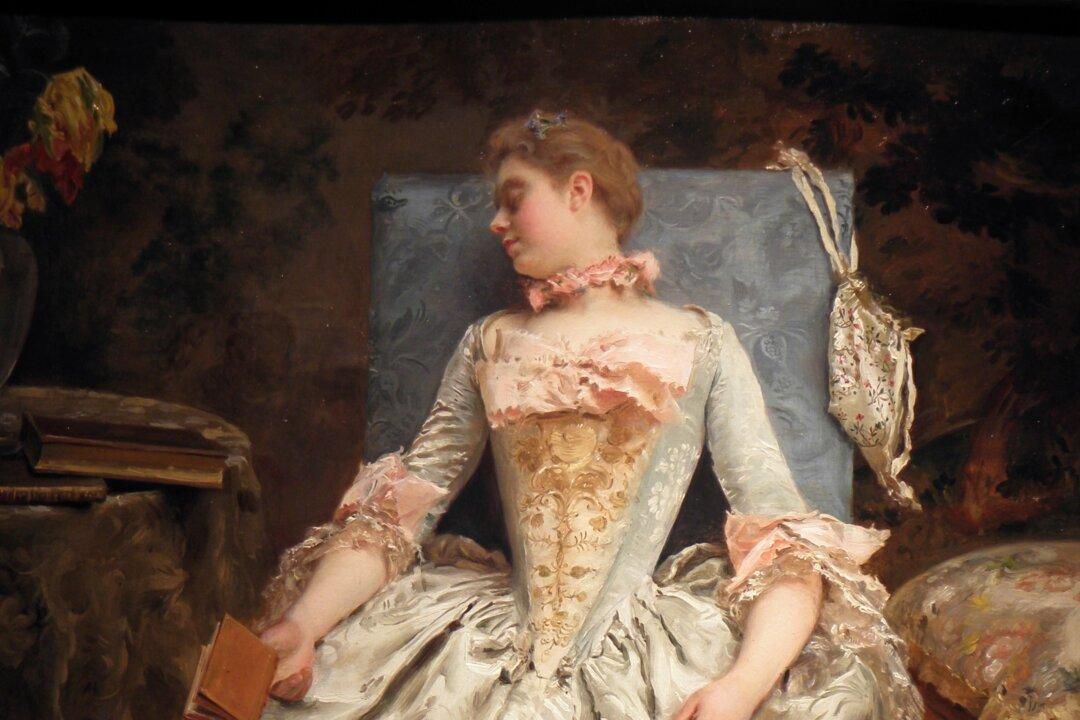Although William Bouguereau (1825–1905), painted the Madonna and Child several times throughout his career, there are two versions that draw an interesting comparison to one another as they are similar in many ways but hold interesting symbolic differences as well. The first is “La Vierge aux Lys” painted in 1899 and the second is “La Madone aux Roses,” in 1903. Both are three quarters length and show only the mother and child with no additional figures.
A Comparison of Two Madonna Paintings by Bouguereau
William Bouguereau's 'Virgin of the Lilies' versus 'Madonna of the Roses'

“La Madone aux Roses,” 1903 (L), and “La Vierge aux Lys,” 1899 (R), both by William Bouguereau. Courtesy of Art Renewal Center
|Updated:





